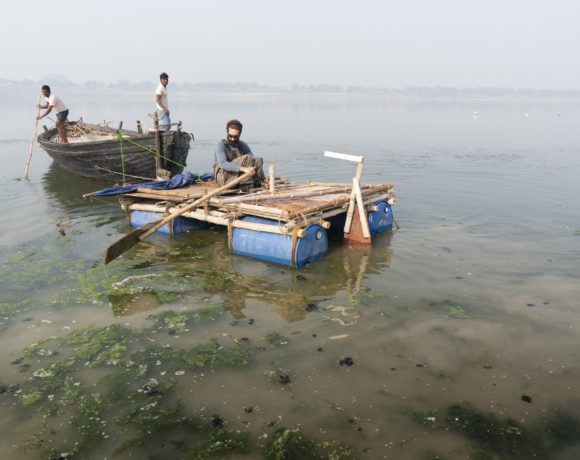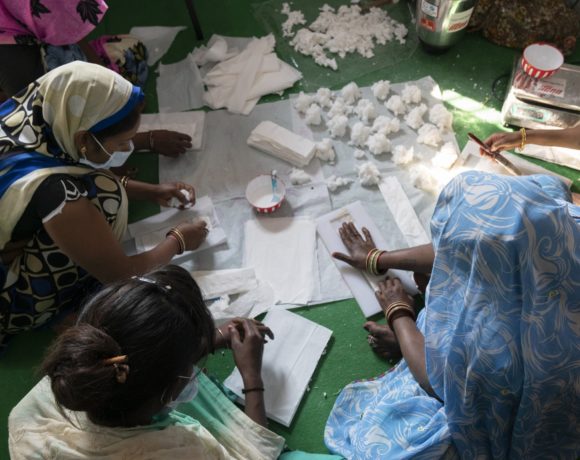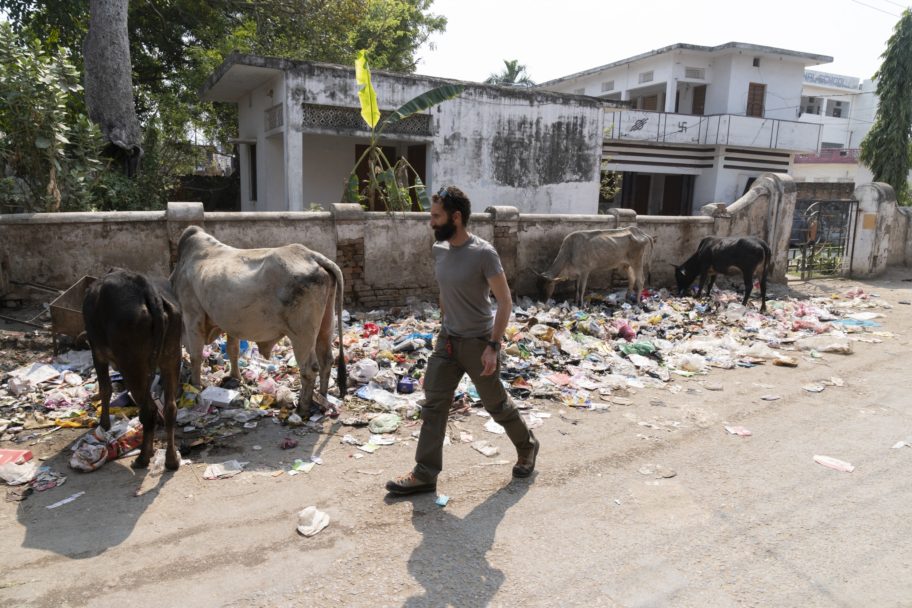Tonight I’m in Ghazipur and, after Varanasi, it’s the biggest city I’ve encountered on my journey. It is a postcard from India:
people eating, people washing, people sleeping. People arguing and screaming. People thrusting their hands through our taxi window, begging. People defecating and urinating. People clinging to buses. People herding animals – people, people, people.
Actually, these words are not mine, but those written in the book ‘The Population Bomb’ about New Delhi.
In Ghazipur I had planned to meet Ankur, a volunteer who works with Imsong for the same NGO. I wanted to ask him what – in his opinion – the future holds for the Ganges and for the people who depend upon it. To answer this question, he took me to a ghat (riverbank step) which, in some ways, is a litmus test of the quality of life here. A clean ghat is often associated with people who take care of public spaces – a dirty ghat is often the expression of a place which has been abandoned.
In Ankur’s opinion, the only way to save the Ganges is to emotionally connect people physically to the place where they live. It is for this reason that in 2015, after cleaning up the ghat with a group of volunteers, he made sure that the schools in Gazipur took their students to sit classes on the ghat.
The idea was that students would remember this experience as adults and want to take care of their environment. In short – if you know it, you respect it.
Another project that has just started, which Ankur is very proud of, sees a group of women working on the production of bio-degradable sanitary pads. Not only does this project contribute to improving sanitary conditions for so many women who would otherwise use rags, it also encourages dialogue between women and introduces the concept of eco-friendly products which do not harm the environment into people’s daily lives. This is something they have never been taught.
I am only a week into my journey and yet it feels as if I have been travelling for thousands of kilometres. I am very glad that my mission is being welcomed so positively by all the people I meet and is helping me to understand the intricate relationship between the river Ganges, its people and their faith.



